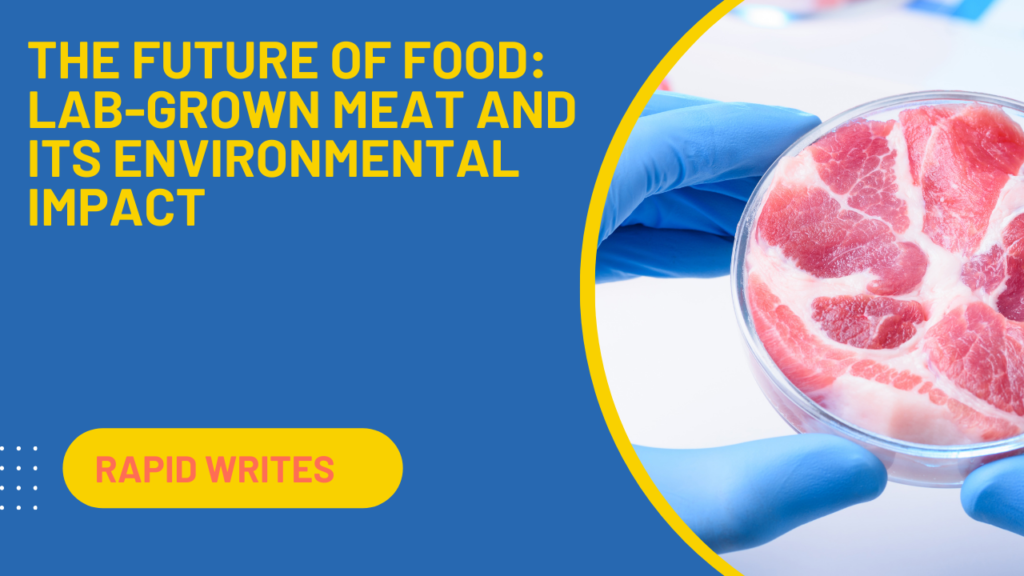Introduction
In the quest for sustainable food sources, lab-grown meat, also known as cultured or cell-based meat, emerges as a groundbreaking innovation with the potential to revolutionize the food industry. This technology involves cultivating meat from animal cells in a lab, bypassing conventional livestock farming methods. As the global population continues to grow, lab-grown meat presents a promising solution to meet the increasing demand for protein while addressing environmental concerns and ethical issues associated with traditional animal agriculture. This blog explores the science behind cultured meat, its environmental benefits, the challenges it faces, and what the future might hold.
Understanding Lab-Grown Meat
Lab-grown meat is produced by harvesting muscle cells from animals and cultivating them in a nutrient-rich medium. These cells then proliferate and differentiate into muscle tissue, essentially growing meat without the need to raise and slaughter animals. The process starts with a biopsy from a live animal, after which the cells are placed in a bioreactor where they grow, multiply, and eventually form muscle fibers that are harvested as meat.
Environmental Benefits
The potential environmental benefits of lab-grown meat are significant:
- Reduced Greenhouse Gas Emissions: Traditional livestock farming is a major source of methane, a potent greenhouse gas. Cultured meat production could drastically reduce these emissions.
- Lower Water Usage: Producing lab-grown meat consumes considerably less water than conventional meat production, which requires large amounts of water for animals and to grow feed.
- Decreased Land Use: Cultivating meat in labs eliminates the need for vast tracts of land used for grazing and growing feed, potentially allowing for reforestation and restoration of natural habitats.
- Biodiversity Preservation: Reducing the land footprint of meat production can lessen the pressure on wildlife and contribute to preserving biodiversity.
Animal Welfare and Ethical Considerations
One of the most compelling arguments for lab-grown meat is its potential to improve animal welfare. By eliminating the need for raising and slaughtering billions of animals for food, cultured meat offers a more humane alternative. This aspect alone could drive consumer interest and acceptance, particularly among those concerned with animal rights.
Challenges Ahead
Despite its promise, lab-grown meat faces several hurdles:
- Scaling Up Production: While the technology has been proven, scaling up to commercial levels remains a challenge. High production costs and the need for specialized equipment are significant barriers.
- Regulatory Approval: Before it can be sold to the public, lab-grown meat must gain regulatory approval, which involves proving its safety and nutritional equivalence to conventional meat.
- Consumer Acceptance: Convincing consumers to switch to cultured meat is another hurdle. Taste, texture, and overcoming the ‘unnatural’ stigma associated with lab-grown products are crucial for widespread acceptance.
- Nutritional Profile: Ensuring that lab-grown meat matches or exceeds the nutritional benefits of traditional meat is essential for its success.
The Road Ahead
As research continues and companies work towards commercializing cultured meat, the future looks promising. Advances in biotechnology and manufacturing could reduce costs and make lab-grown meat a viable alternative to traditional meat. Moreover, with growing environmental and ethical concerns surrounding animal agriculture, consumer attitudes towards cultured meat are likely to become increasingly positive.
Conclusion
Lab-grown meat stands at the frontier of food technology, offering a vision of a future where meat production is more sustainable, ethical, and environmentally friendly. While challenges remain, the potential benefits for the planet, animals, and human health make it a compelling area of innovation. As we move forward, cultured meat could play a crucial role in reshaping our food systems and addressing some of the most pressing issues of our time.



